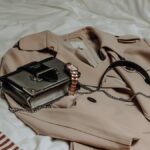Fashionpreneurship 101: How To Start Your Fashion Business In Nigeria
Launching a successful fashion brand in Nigeria’s vibrant and rapidly growing fashion industry can be an incredibly rewarding journey. The marketplace is ripe with opportunity for those with talent, determination, and a strategic approach.
With creativity and grit, you can build a brand that resonates with modern Nigerian consumers. This guide covers step-by-step best practices to set your fashion business up for longevity.
Conducting In-Depth Market Research
The first crucial step is understanding Nigeria’s fashion consumer and the competitive landscape. Thorough market research will inform every subsequent decision, so dedicate adequate time to this.
Get to Know Your Target Audience Intimately
Identify demographic factors like age, income level, geographic location and gender of your ideal customers. Go deeper by researching their values, lifestyles, preferences and shopping habits. What colours, silhouettes, fabrics and embellishments appeal to their aesthetic? Attend relevant events, read magazines, people watch and immerse yourself in your target audience’s world.
Analyze Market Size and Growth Trends
Look at data on the spending power and size of your target market. By some estimates, Nigeria’s fashion industry is now valued at over $4 billion annually and is projected to keep expanding as incomes rise. Use this data to size up the opportunity.
Study Your Competition
Research both big players like Deola Sagoe and Project Runway contestants, as well as less-known independent designers. Study their positioning, pricing, styles and quality. Identify gaps in the market your brand can uniquely fill.
Keep Pulse on Trends
Fashion evolves quickly, so stay on top of the latest trends and influences. Follow Nigerian pop culture, fashion weeks, magazines, blogs and celebrities to see what’s resonating now. Track favourite colours, prints, silhouettes and other styles gaining popularity.
For inspiration, look to successful Nigerian fashion brands like House of Nwocha, Grey Velvet, and Lisa Folawiyo who have become popular for their unique styles. Analyze their branding, designs, and marketing strategies for practical insights.
Crafting a Comprehensive Business Plan
With market research completed, it’s time to dive into structuring your business. A well-defined business plan is essential for thinking through all aspects of your brand and communicating your vision to potential investors.
Define Short and Long Term Goals
Outline specific short-term goals for launching the business and long-term goals for growth. This could include targets like successfully debuting your first collection within X months and expanding to 5 stores within 5 years.
Map Out Operational Strategies
Flesh out detailed strategies for pricing products, producing items, getting distribution, marketing the brand, selling items, staffing and more. Adapt as needed, but start with robust plans.
Make Financial Projections
Project startup expenses, operating costs, and expected revenues. Estimate profit margins, break-even points and other key financial metrics. Build in some contingency buffer for unforeseen issues.
Conduct a SWOT Analysis
Analyze your company’s strengths, weaknesses, opportunities and threats. Identify potential risks like funding shortfalls, inventory problems, or staffing challenges. Make mitigation plans.
Given the digital landscape, dedicate a section of your plan to outline strategies for establishing a strong online presence through social media, e-commerce platforms like Jumia and Konga, and digital marketing campaigns. This is essential for modern visibility.
Laying the Business Foundations
Before launching your brand, ensure key legal, financial and operational foundations are in place.
Choose and Register Your Business Name
Select a memorable Nigerian brand name that aligns with your vision while checking availability. Register the name officially with the Corporate Affairs Commission for legal protection.
Obtain Necessary Permits and Licenses
Research which permits, licenses and regulations apply to your business based on location and industry. Remain compliant by obtaining the ones needed early on. Consult resources like the Nigerian Bar Association to connect with qualified lawyers and advisors to assist with permits, licenses, regulations, and IP protections.
Secure Sufficient Funding
Determine exactly how much startup funding you need based on projections. Pursue funding through sources like personal savings, loans, investors, and government small business grants.
Selecting Your Area of Focus
Within fashion, there are diverse business models and niches to consider. Choose your focus based on your strengths, resources and interests.
Clothing Production
Designing and manufacturing a clothing line in Nigeria allows tight quality control but is capital-intensive. Consider starting with small runway collections.
Accessories Design
Items like jewellery, handbags, and shoes complement full apparel lines well. Initial costs can be lower compared to garments.
Fashion Consulting
Offer services like personal styling, design advice, creative direction, and fashion psychology individually to clients. Leverage your expertise.
Event Planning
Organize fashion shows, trunk shows, photoshoots, influencer campaigns and other branded events for designers. Excellent networking opportunities.
Sourcing High-Quality Materials Ethically
Fabrics, textures, embellishments—the raw materials are intrinsic to good design. Source thoughtfully and sustainably.
Survey Textile Markets
Travel to markets and merchants to view fabrics like adire, ankara, African wax prints, kente, aso oke and more. Feel quality variations and learn to price.
Find Reliable Suppliers
Identify and build relationships with vendors who offer consistency, fair prices and responsible production. Support local artisans when possible. Collaborate with skilled local craftspeople to bring designs to life. Learn traditional skills while supporting community development.
Seek Out Innovation
Keep sight of new material technologies and sustainability initiatives. For example, upcycled textiles or eco-friendly dyes. Implement what aligns with your brand values.
Bringing Your Designs to Life
Now brings the fun part—finally bringing your creative vision to fruition! Collaborate, iterate and bring in objective feedback.
Sketch Your Concepts
Take market research insights and begin sketching designs. Focus on styles, silhouettes, prints, and details you believe will resonate based on appeal and ease of production.
Collaborate With Tailors
Work closely with talented local tailors and sewers early on. Learn techniques from their experience while ensuring quality construction.
Create Samples and Make Adjustments
Produce prototypes of your designs to evaluate fit, shape, movements and fabric. Refine pieces repeatedly until you achieve your vision.
Do Test Photoshoots
Organize preliminary photoshoots with models that represent your target customers. See how pieces photograph for e-commerce or marketing usage.
Incorporate Feedback
Show samples to objective industry experts and mentors. Iteratively incorporate constructive feedback on how pieces can be improved or more marketable.
Launching Your Fashion Brand
It’s finally time to debut your collection and share your story. Maximize reach and buzz with creative launch strategies.
Host a Launch Event
Consider hosting a fashion show, pop-up shop or exclusive preview event to unveil your line in person. Offer pre-orders.
Set Up an E-commerce Store
Enable online shopping accessibility for modern customers via an attractive website with detailed product information. Promote through digital marketing campaigns.
Supply Local Boutiques
Approach local boutiques, concept stores and retailers that fit your brand about carrying your pieces on consignment.
The fashion industry is powered by connections and relationships. Add a section in your launch plan on the importance of networking by attending fashion events, getting to know industry professionals, bloggers, and editors, and collaborating with other designers. Seek out mentors and build community.
Growing Sustainably and Optimizing Operations
Sustainability and innovation should be baked into your fashion brand’s DNA. Always refine processes.
Implement Eco-Friendly Practices
Use organic, upcycled or recycled materials. Minimize waste in production and packaging. Track supply chains for transparency.
Embrace New Technologies
Explore innovations like digital design software, 3D printing, and AR virtual try-ons. Implement solutions that align with your capabilities.
Continuously Improve
Listen to customer feedback, analyze sales data and audit processes. Identify areas to streamline operations or enhance the customer experience.
In Conclusion
Starting a fashion business in Nigeria is a journey filled with excitement, challenges, and endless possibilities. With determination, creativity, and a clear plan, you can turn your fashion dreams into reality. Embrace the vibrant colours of Nigerian culture, the innovative spirit of entrepreneurship, and the joy of creating something beautiful.
Additional Resource
- Entrepreneurs NG: How to Start a Fashion Business in Nigeria
- Lewis Ray Law: How to Start Profitable Fashion Business in Nigeria 2023
- Connect Nigeria: 5 Tips for Starting a Fashion Business
Remember, the fashion industry is not just about clothes; it’s about expression, empowerment, and economic growth. Whether you’re designing elegant evening gowns or crafting sustainable accessories, your fashion business is a canvas for your creativity. Paint it with passion, and watch your dreams unfold.






